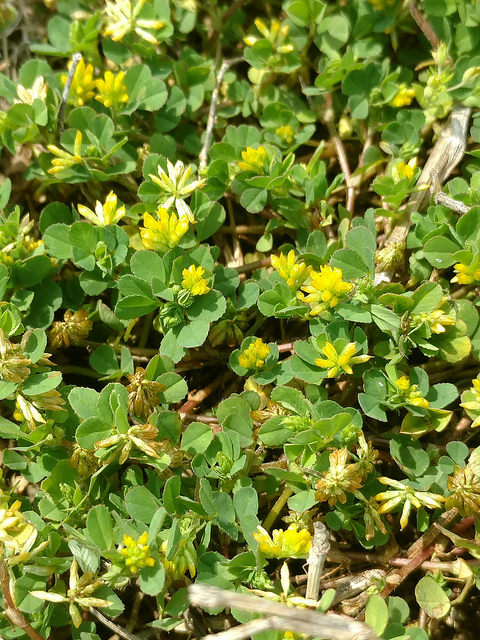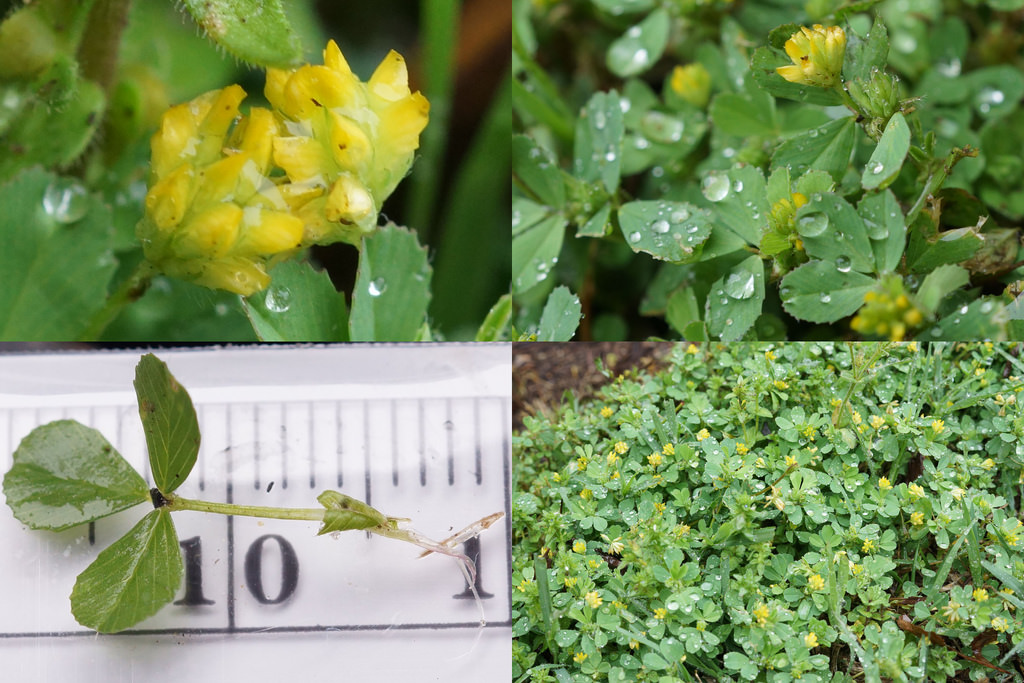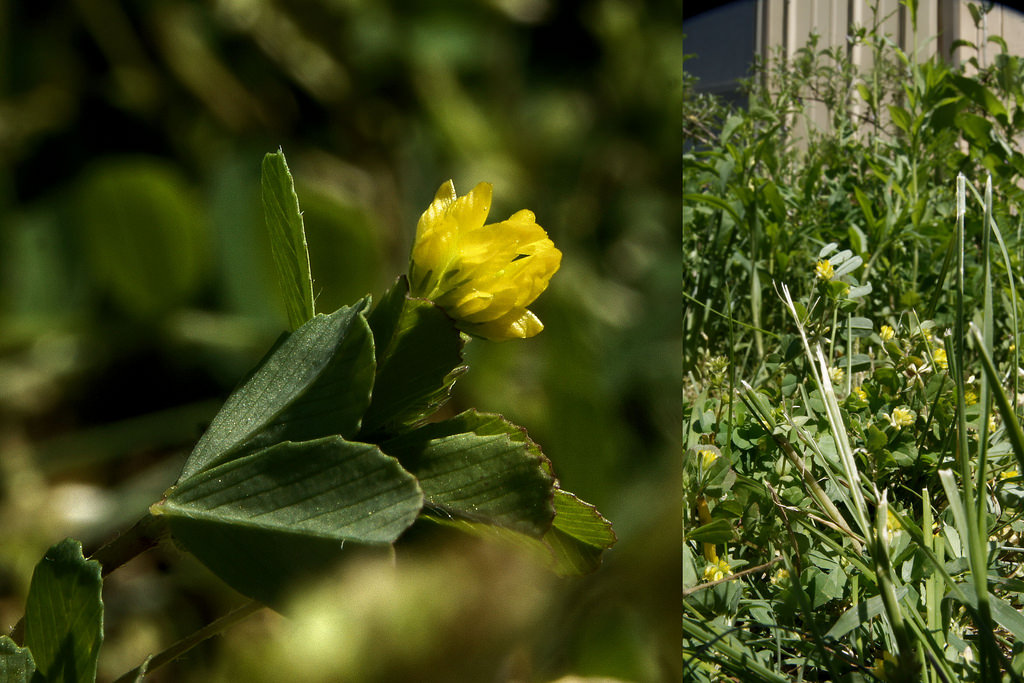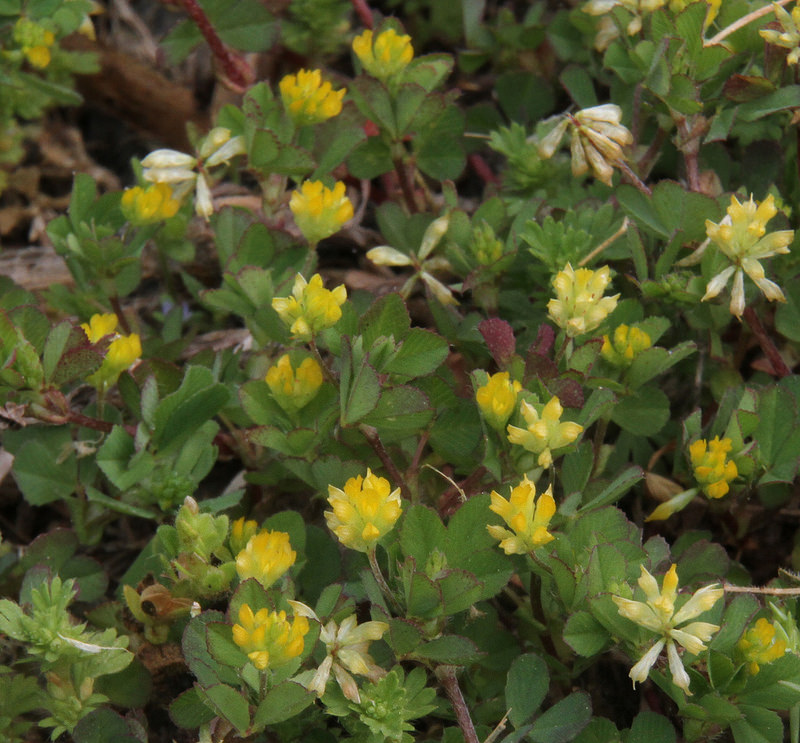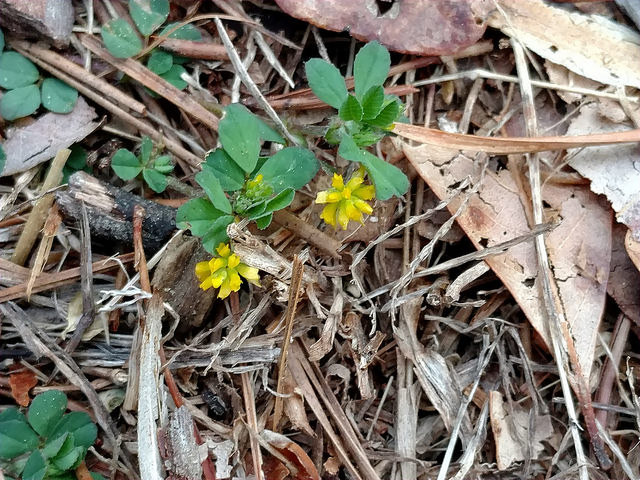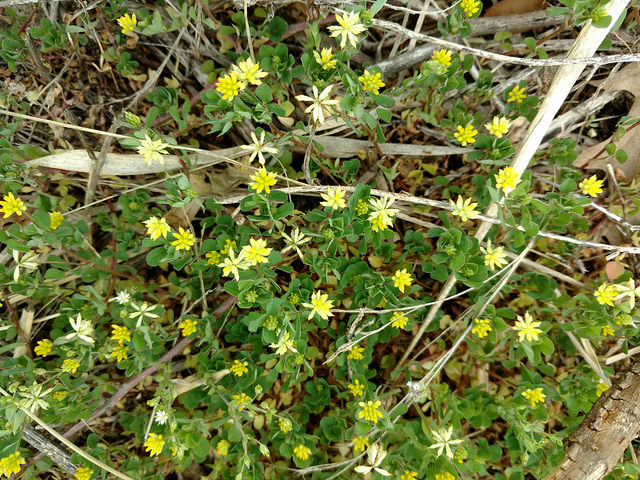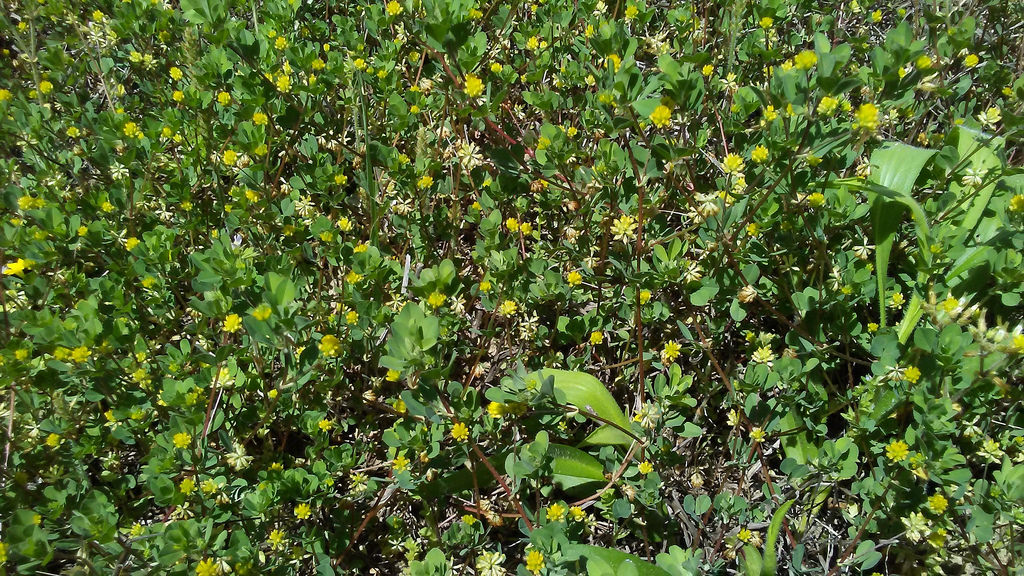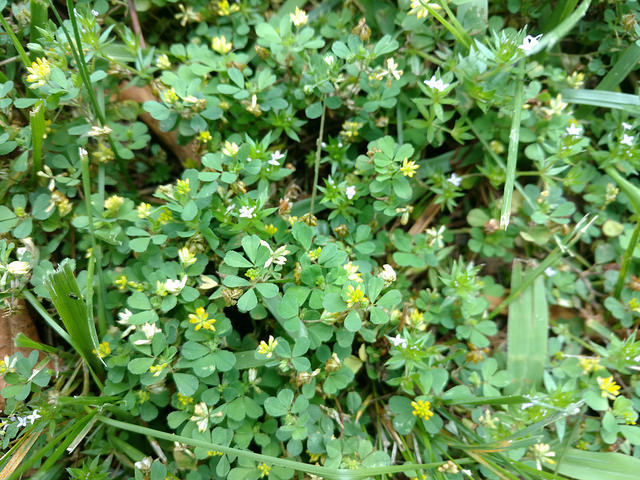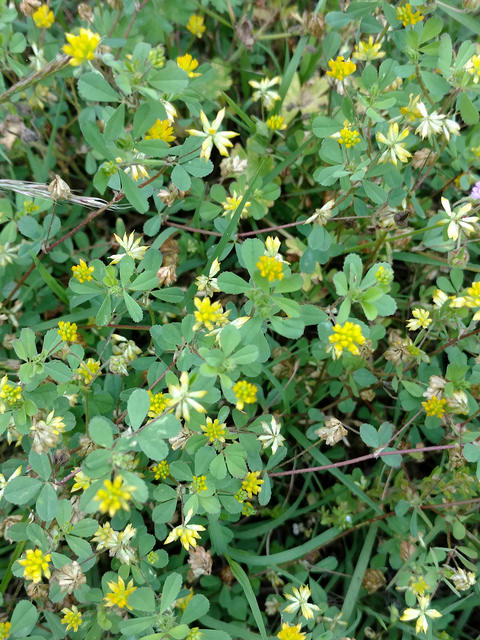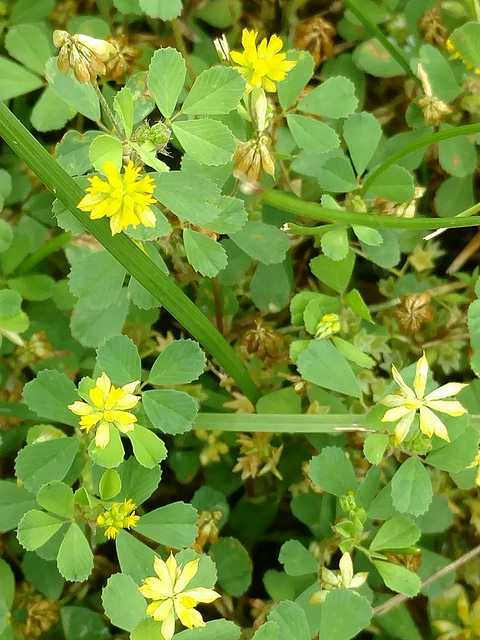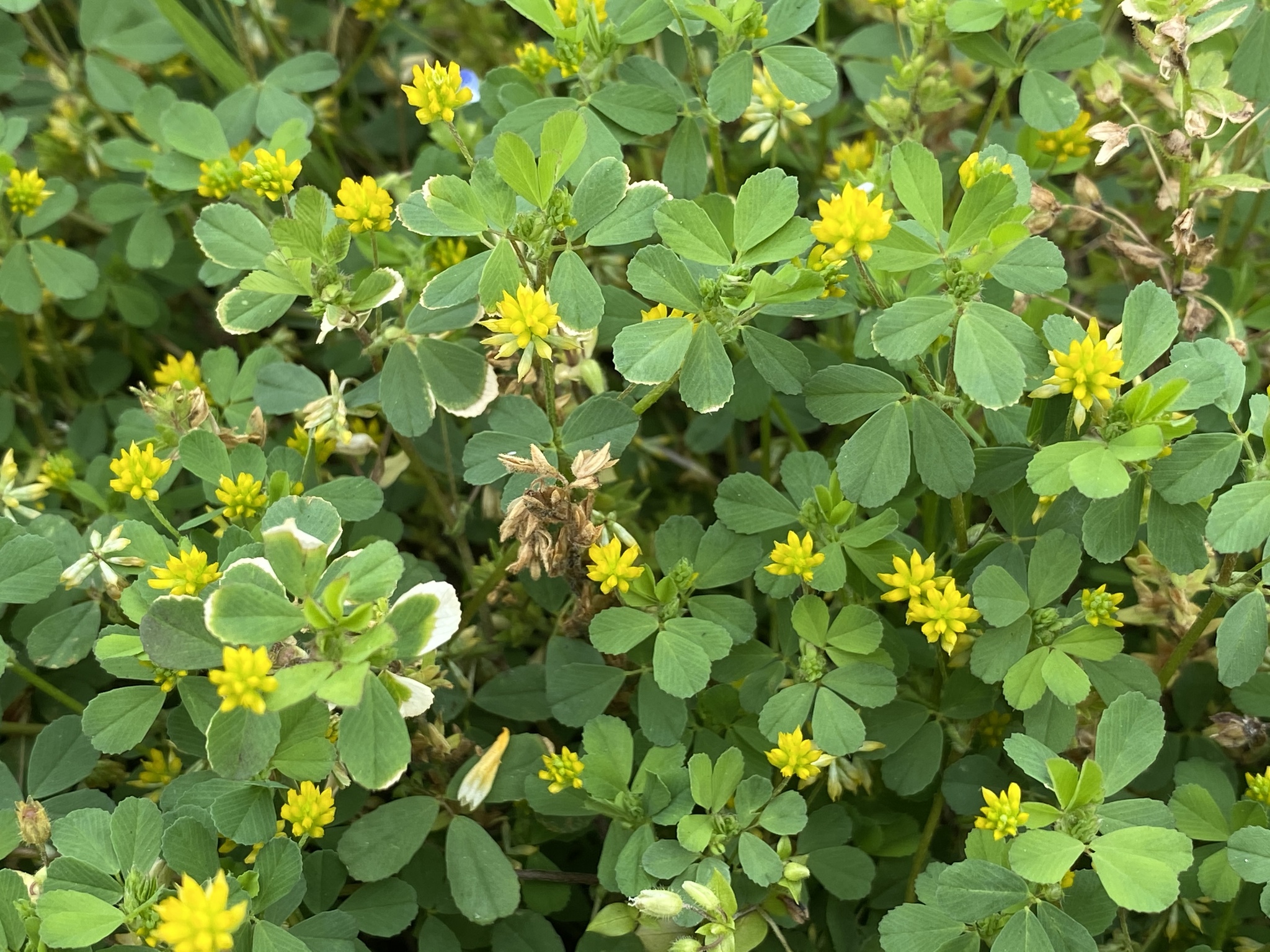Map Snapshot






















225 Records
Status
Suckling Clover is native to Europe and was introduced to the United States as early as the 1700s. In the United States this species of yellow clover is now most often found east of the Mississippi River and along the west coast, but has been found in every state. The earliest collected specimen in the Smithsonian's Flora of Washington-Baltimore special collections is a specimen collected by C.O. Thurston in 1889 from northern Anne Arundel County. Suckling Clover blooms from late April through June.
Description
Suckling Clover is the smallest of the four common introduced yellow clovers found in Maryland. The flowering head consists of less than 15 flowers and the central leaflet lacks a mucronate tip and has a very short petiole (1mm or less). These three characteristics separate Suckling Clover from all the other yellow clovers commonly found in Maryland.
Where To Find
Suckling Clover is to be looked for in yards, open spaces with low vegetation and lots of sun, and mowed road edges.
Seasonality Snapshot
Source: Wikipedia
| Trifolium dubium | |
|---|---|

| |
| Scientific classification | |
| Kingdom: | Plantae |
| Clade: | Tracheophytes |
| Clade: | Angiosperms |
| Clade: | Eudicots |
| Clade: | Rosids |
| Order: | Fabales |
| Family: | Fabaceae |
| Subfamily: | Faboideae |
| Genus: | Trifolium |
| Species: | T. dubium
|
| Binomial name | |
| Trifolium dubium | |
| Synonyms[1] | |
| |
Trifolium dubium, the lesser trefoil,[2] suckling clover,[3] little hop clover or lesser hop trefoil, is a flowering plant in the pea and clover family Fabaceae. This species is generally accepted as the primary plant to represent the traditional Irish shamrock.[4]
It is native to Europe, but can be found in many parts of the world as an introduced species.
It is probably an allotetraploid with 2n=32 that arose from the crossing of Trifolium campestre and T. micranthum.[5]
Gallery
[edit]Similar plants
[edit]Lesser hop trefoil, Trifolium dubium, may be confused with other plants that have three leaflets and small yellow flowers, such as large hop trefoil (T. aureum), hop trefoil (T. campestre), black medick (Medicago lupulina), and yellow woodsorrel (Oxalis stricta).
See also
[edit]References
[edit]- ^ "The Plant List: A Working List of All Plant Species". Retrieved 28 June 2015.
- ^ BSBI List 2007 (xls). Botanical Society of Britain and Ireland. Archived from the original (xls) on 2015-06-26. Retrieved 2014-10-17.
- ^ NRCS. "Trifolium dubium". PLANTS Database. United States Department of Agriculture (USDA). Retrieved 15 December 2015.
- ^ Cooper, P. Shamrock shortage in Ireland sparks St. Pat's fears. Irish Central.
- ^ Ansari, H. A., et al. (2008). Molecular and cytogenetic evidence for an allotetraploid origin of Trifolium dubium (Leguminosae). Chromosoma 117(2):159-67.
External links
[edit]
